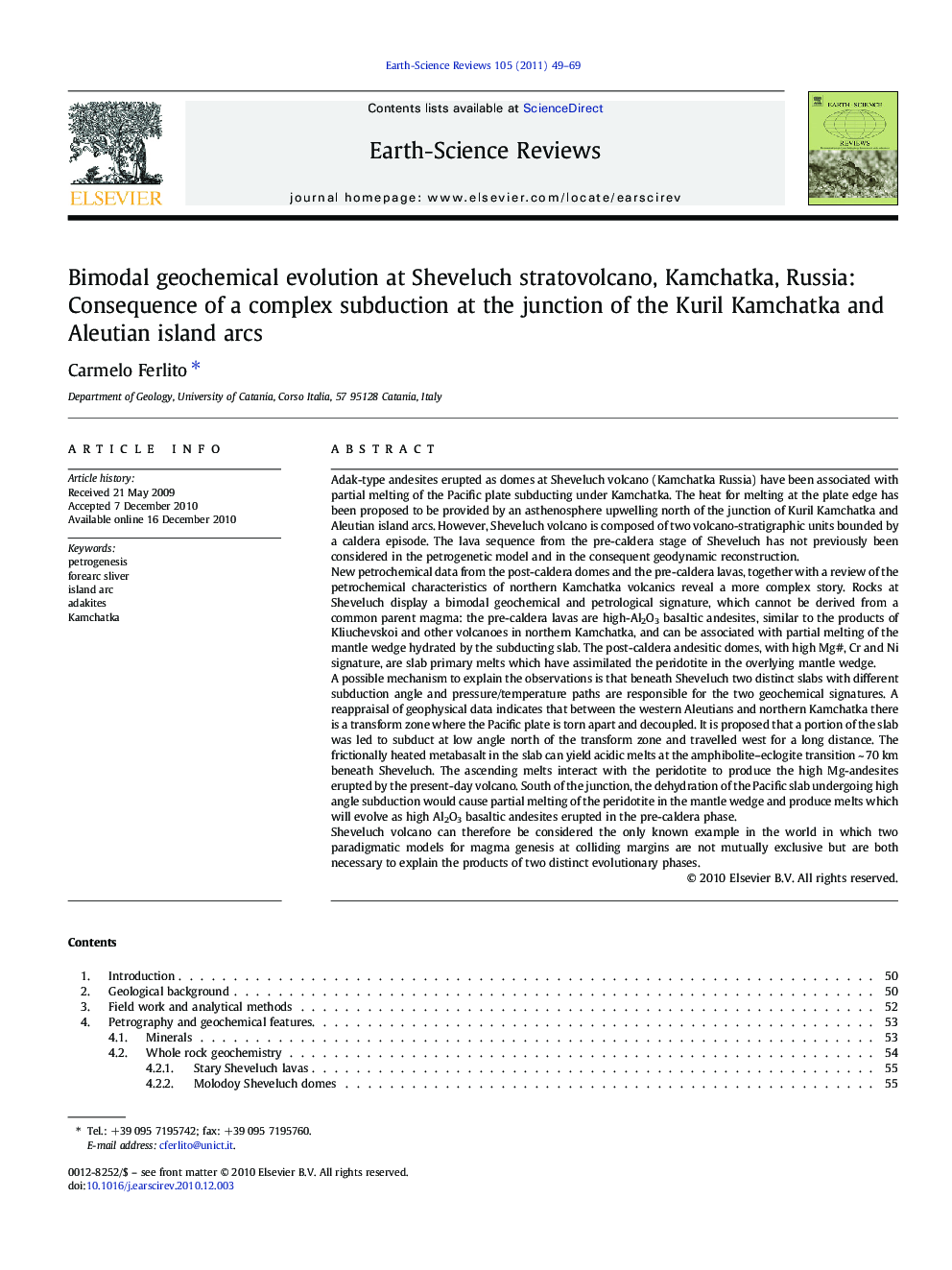| کد مقاله | کد نشریه | سال انتشار | مقاله انگلیسی | نسخه تمام متن |
|---|---|---|---|---|
| 4726057 | 1640006 | 2011 | 21 صفحه PDF | دانلود رایگان |

Adak-type andesites erupted as domes at Sheveluch volcano (Kamchatka Russia) have been associated with partial melting of the Pacific plate subducting under Kamchatka. The heat for melting at the plate edge has been proposed to be provided by an asthenosphere upwelling north of the junction of Kuril Kamchatka and Aleutian island arcs. However, Sheveluch volcano is composed of two volcano-stratigraphic units bounded by a caldera episode. The lava sequence from the pre-caldera stage of Sheveluch has not previously been considered in the petrogenetic model and in the consequent geodynamic reconstruction.New petrochemical data from the post-caldera domes and the pre-caldera lavas, together with a review of the petrochemical characteristics of northern Kamchatka volcanics reveal a more complex story. Rocks at Sheveluch display a bimodal geochemical and petrological signature, which cannot be derived from a common parent magma: the pre-caldera lavas are high-Al2O3 basaltic andesites, similar to the products of Kliuchevskoi and other volcanoes in northern Kamchatka, and can be associated with partial melting of the mantle wedge hydrated by the subducting slab. The post-caldera andesitic domes, with high Mg#, Cr and Ni signature, are slab primary melts which have assimilated the peridotite in the overlying mantle wedge.A possible mechanism to explain the observations is that beneath Sheveluch two distinct slabs with different subduction angle and pressure/temperature paths are responsible for the two geochemical signatures. A reappraisal of geophysical data indicates that between the western Aleutians and northern Kamchatka there is a transform zone where the Pacific plate is torn apart and decoupled. It is proposed that a portion of the slab was led to subduct at low angle north of the transform zone and travelled west for a long distance. The frictionally heated metabasalt in the slab can yield acidic melts at the amphibolite–eclogite transition ~ 70 km beneath Sheveluch. The ascending melts interact with the peridotite to produce the high Mg-andesites erupted by the present-day volcano. South of the junction, the dehydration of the Pacific slab undergoing high angle subduction would cause partial melting of the peridotite in the mantle wedge and produce melts which will evolve as high Al2O3 basaltic andesites erupted in the pre-caldera phase.Sheveluch volcano can therefore be considered the only known example in the world in which two paradigmatic models for magma genesis at colliding margins are not mutually exclusive but are both necessary to explain the products of two distinct evolutionary phases.
Journal: Earth-Science Reviews - Volume 105, Issues 1–2, March 2011, Pages 49–69